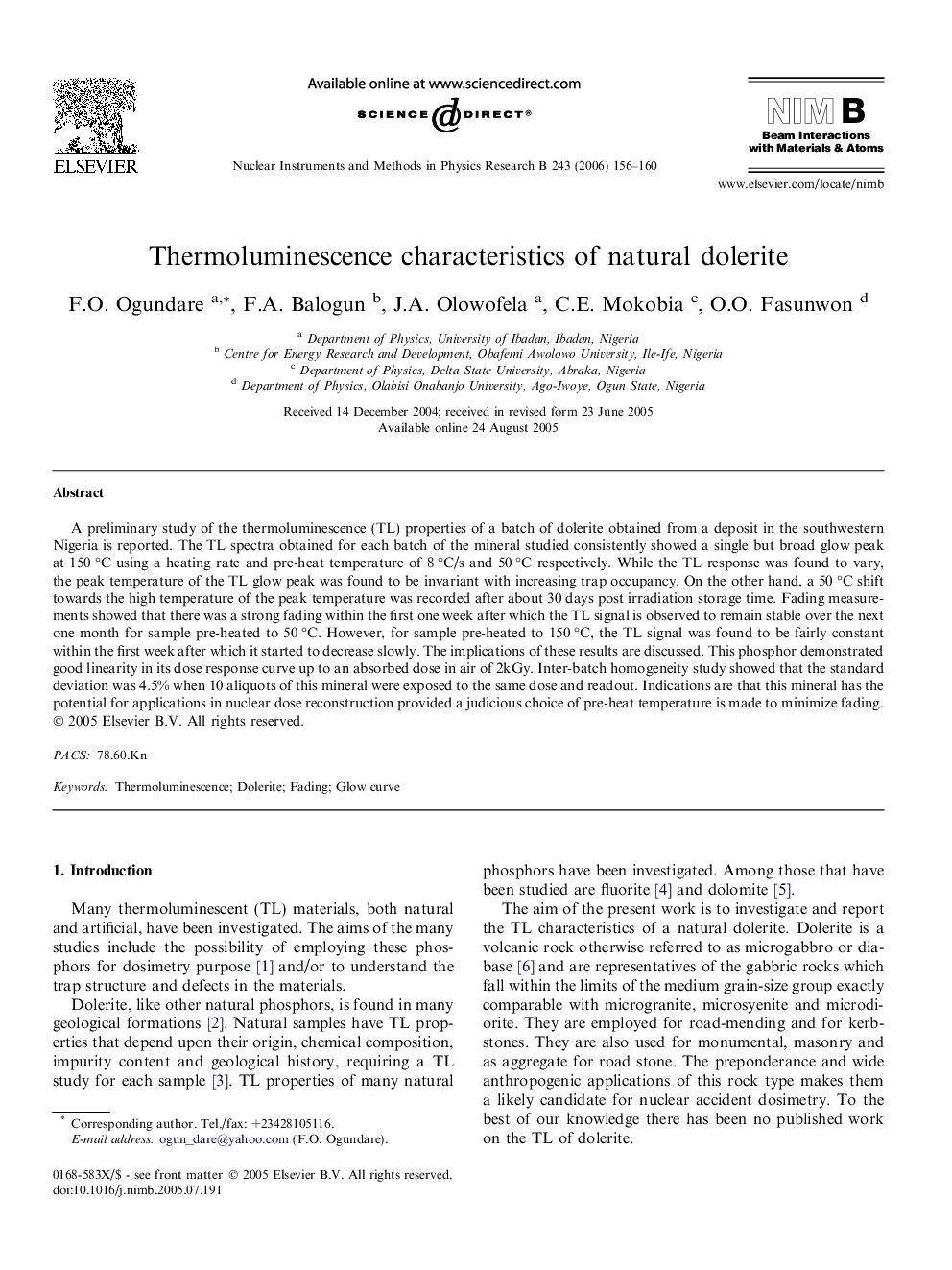| Article ID | Journal | Published Year | Pages | File Type |
|---|---|---|---|---|
| 1684329 | Nuclear Instruments and Methods in Physics Research Section B: Beam Interactions with Materials and Atoms | 2006 | 5 Pages |
A preliminary study of the thermoluminescence (TL) properties of a batch of dolerite obtained from a deposit in the southwestern Nigeria is reported. The TL spectra obtained for each batch of the mineral studied consistently showed a single but broad glow peak at 150 °C using a heating rate and pre-heat temperature of 8 °C/s and 50 °C respectively. While the TL response was found to vary, the peak temperature of the TL glow peak was found to be invariant with increasing trap occupancy. On the other hand, a 50 °C shift towards the high temperature of the peak temperature was recorded after about 30 days post irradiation storage time. Fading measurements showed that there was a strong fading within the first one week after which the TL signal is observed to remain stable over the next one month for sample pre-heated to 50 °C. However, for sample pre-heated to 150 °C, the TL signal was found to be fairly constant within the first week after which it started to decrease slowly. The implications of these results are discussed. This phosphor demonstrated good linearity in its dose response curve up to an absorbed dose in air of 2kGy. Inter-batch homogeneity study showed that the standard deviation was 4.5% when 10 aliquots of this mineral were exposed to the same dose and readout. Indications are that this mineral has the potential for applications in nuclear dose reconstruction provided a judicious choice of pre-heat temperature is made to minimize fading.
